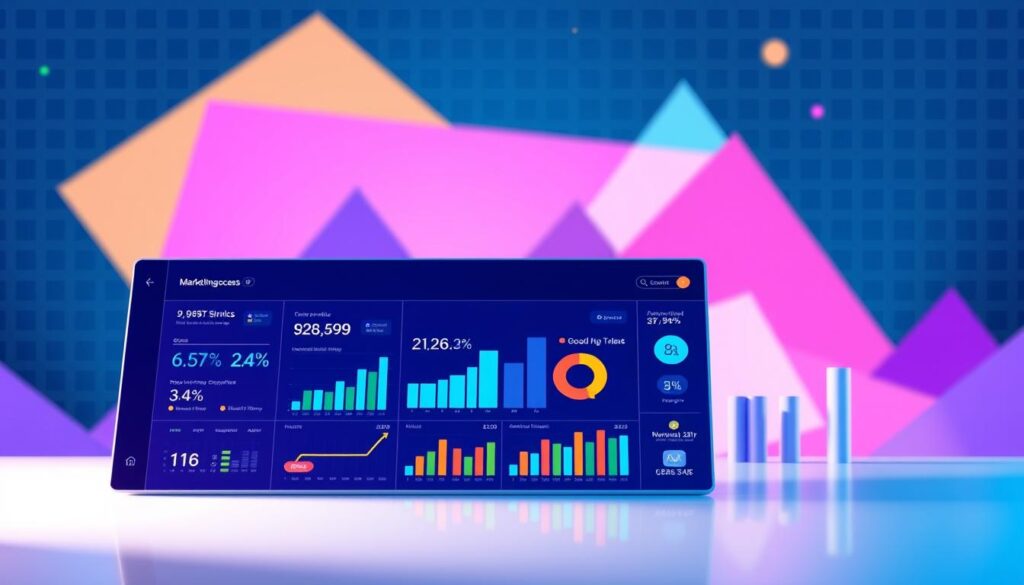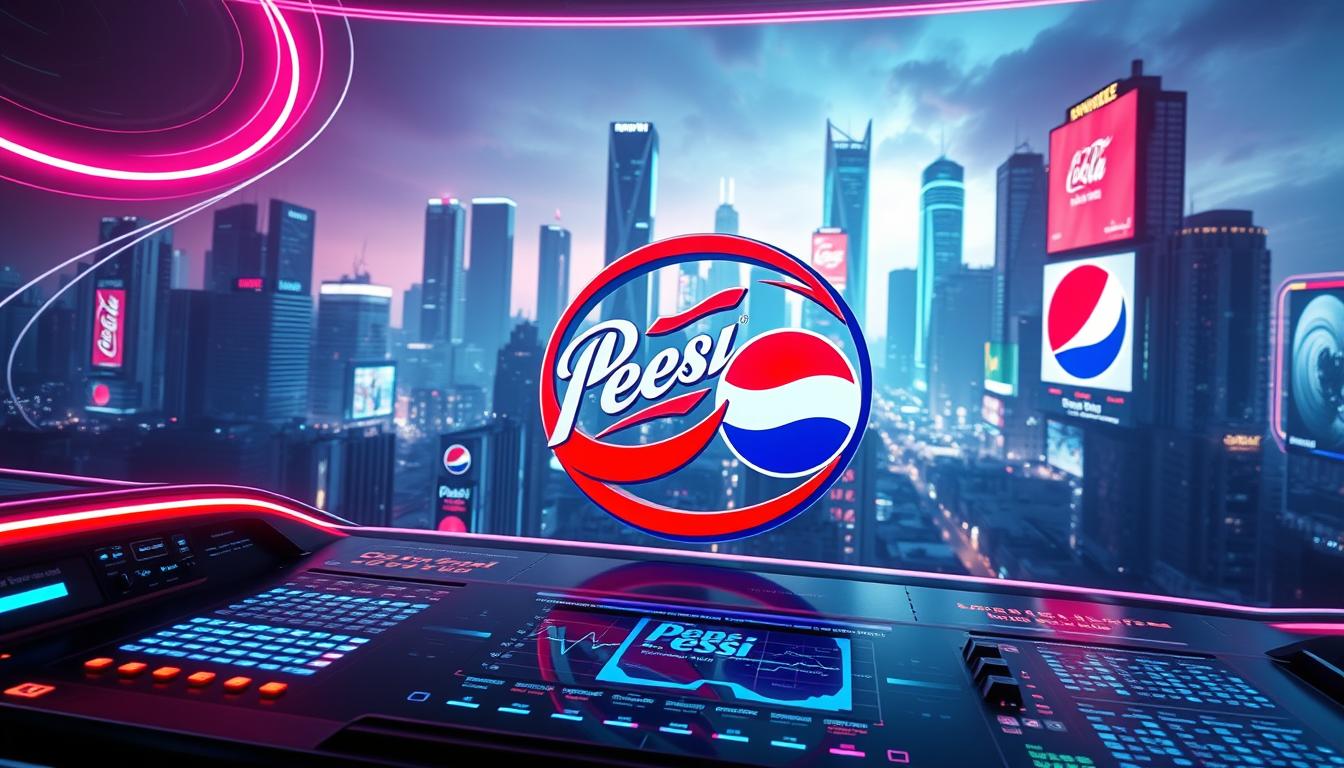The rivalry between Coca-Cola and Pepsi is one of the most iconic and enduring in the history of marketing, with both brands using various digital marketing strategies to gain an edge over the other. This rivalry has been ongoing for over a century, with Coca-Cola established in 1886 and PepsiCo founded in 1893. Both brands have been using social media marketing and SEO strategies to increase their online presence and engage with their target audience.
In recent years, Coca-Cola and Pepsi have been using digital marketing to promote their products and increase brand awareness. With the rise of social media, both brands have been using platforms like Twitter, Instagram, and Facebook to connect with their customers and promote their products. The use of digital marketing has allowed both brands to reach a wider audience and increase their sales. The companies’ advertising spend in 2021, with Coca-Cola spending approximately $2 billion and PepsiCo spending approximately $1.1 billion, highlights the importance of digital marketing in their overall marketing strategy.
The competition between Coca-Cola and Pepsi is not just about the products they offer, but also about the digital marketing strategies they use to promote their brands. Both brands have been using SEO strategies to increase their online visibility and reach a wider audience. By using digital marketing and social media marketing, both Coca-Cola and Pepsi have been able to increase their brand awareness and promote their products to a wider audience.
Key Takeaways
- Coca-Cola and Pepsi have been rivals for over a century, using various digital marketing strategies to gain an edge over the other.
- Both brands use social media marketing and SEO strategies to increase their online presence and engage with their target audience.
- Coca-Cola and Pepsi have been using digital marketing to promote their products and increase brand awareness.
- The companies’ advertising spend in 2021 highlights the importance of digital marketing in their overall marketing strategy.
- Both brands have been using SEO strategies to increase their online visibility and reach a wider audience.
- Digital marketing has allowed both Coca-Cola and Pepsi to increase their sales and promote their products to a wider audience.
The Birth of a Century-Long Marketing Battle
The rivalry between Coca-Cola and Pepsi is a legendary example of brand positioning in the beverage industry. The two companies have been competing for over a century, with each trying to outdo the other in terms of marketing and advertising. In the early days, they focused on traditional marketing methods, such as print and radio advertising.
As the years went by, the companies began to explore new marketing strategies, including influencer marketing and content marketing. This shift towards digital marketing allowed them to reach a wider audience and engage with their customers in new and innovative ways. Today, both Coca-Cola and Pepsi are leaders in the digital marketing space, with a strong presence on social media and other online platforms.
Here are some key statistics that highlight the importance of digital marketing in the beverage industry:
- 93% of marketers engaged in influencer marketing in 2020
- 60% of Instagram users credit the platform for product discovery
- 39% of respondents reported increased interest in products featured in Instagram stories
The evolution of marketing strategies has been shaped by advances in technology and changes in consumer behavior. As the digital Sundae continues to grow, companies like Coca-Cola and Pepsi must continue to adapt and innovate to stay ahead of the competition.
Digital Marketing Strategies That Shaped the Modern Cola Wars
Coca-Cola and Pepsi have been using various digital marketing strategies to gain an edge over each other. One notable example is Coca-Cola’s “Share a Coke” campaign, which featured personalized bottles with popular names and helped increase brand engagement. This campaign is a great example of how viral marketing can be used to create a buzz around a brand.
In addition to viral marketing, both brands have also been using email marketing to reach their target audiences. By sending personalized emails to their subscribers, they can promote their products and offers, and encourage customer loyalty. Here are some key digital marketing strategies used by Coca-Cola and Pepsi:
- Social media marketing: Both brands have a strong presence on social media platforms, where they engage with their customers and promote their products.
- Influencer marketing: Coca-Cola and Pepsi have partnered with popular influencers to promote their brands and reach a wider audience.
- Content marketing: Both brands create and share valuable content, such as videos and blog posts, to attract and retain customers.

By using these digital marketing strategies, Coca-Cola and Pepsi have been able to stay ahead of the competition and maintain their positions as leading brands in the beverage industry.
| Brand | Digital Marketing Strategy | Result |
|---|---|---|
| Coca-Cola | Share a Coke campaign | Increased brand engagement |
| Pepsi | Social media marketing | Increased brand awareness |
Social Media Marketing: How Both Brands Dominate Online Conversations
Social media has become a crucial aspect of the Cola Wars, with both Coca-Cola and Pepsi using various platforms to engage with customers and promote their brands. Through social media marketing, these brands have been able to increase their online presence and reach a wider audience.
One key strategy used by both brands is influencer marketing, where they partner with popular influencers and celebrities to promote their products. This has been particularly effective on platforms like Instagram and TikTok, where visually appealing content can be used to reach a younger demographic.
Another important aspect of social media marketing is content marketing, where brands create and share valuable and relevant content to attract and retain a clearly defined audience. This can include blog posts, videos, and social media posts that provide entertainment, education, or information to customers.
Some key statistics that demonstrate the effectiveness of social media marketing include:
- Up to 70% of marketers say that analytics are a key factor in refining their social media strategies.
- 42% of consumers prefer to see more short-form videos (less than 15 seconds) from brands on social media.
- 91% of businesses utilize video marketing to drive sales.
| Platform | Active Users | Key Features |
|---|---|---|
| 1 billion+ | Visually appealing content, influencer marketing | |
| TikTok | 655 million+ | Short-form videos, hashtag challenges |
| 310 million+ | B2B marketing, professional content, thought leadership |
Content Marketing Mastery: Storytelling in the Digital Era
Content marketing has become a crucial aspect of the Cola Wars, with both Coca-Cola and Pepsi using storytelling and emotional appeals to connect with customers. Effective content marketing strategies have helped these brands increase engagement and drive sales. According to recent statistics, 70% of marketers believe that content marketing is more effective than traditional marketing in engaging customers.
Both brands have invested heavily in brand positioning through content marketing, creating campaigns that resonate with their target audiences. For instance, Coca-Cola’s “Share a Coke” campaign was a huge success, while Pepsi’s “Live for Now” campaign featured popular music and celebrities to appeal to younger audiences. Email marketing has also played a significant role in the Cola Wars, with both brands using personalized emails to promote their products and engage with customers.
Some key benefits of content marketing include:
- Increased engagement and lead generation
- Improved brand positioning and awareness
- Cost-effective compared to traditional marketing methods

As the digital landscape continues to evolve, it’s essential for brands to prioritize content marketing and brand positioning to stay ahead of the competition. By leveraging storytelling and emotional appeals, brands can create effective content marketing strategies that drive sales and increase customer loyalty. With the rise of email marketing and other digital channels, the opportunities for brands to connect with their audiences are endless.
| Content Marketing Benefits | Statistics |
|---|---|
| Increased engagement and lead generation | 72% of marketers say content marketing increases engagement and generates leads |
| Improved brand positioning and awareness | 61% of online consumers feel more favorable toward a brand after reading custom content |
| Cost-effective compared to traditional marketing methods | Content marketing costs 62% less than traditional marketing methods while generating about three times as many leads |
SEO Strategies and Online Visibility Tactics
When it comes to increasing online visibility, both Coca-Cola and Pepsi have implemented various SEO strategies to stay ahead in the digital marketing game. Effective SEO techniques significantly improve website visibility in Google search engine results, enhancing organic traffic potential. A well-integrated SEO strategy can lead to increased search engine rankings and brand exposure, which are critical in digital marketing success.
Key components of an effective SEO strategy include keyword research, on-page optimization, off-page optimization, technical SEO, and local SEO, all of which enhance website traffic. Top SEO techniques for 2023 emphasize creating an SEO-friendly website structure, optimizing for mobile, focusing on local search, and enhancing user experience to improve engagement rates. By incorporating these strategies, businesses can increase their chances of attracting potential customers and driving organic traffic to their websites.
Some of the key metrics to measure SEO performance include organic search traffic, keyword rankings, click-through rates, bounce rates, and conversion rates, providing insights into strategy effectiveness. By monitoring these metrics, businesses can refine their SEO strategies and make data-driven decisions to improve their online visibility. Additionally, social media can generate up to a 28% increase in organic traffic to a website when used effectively for content promotion, highlighting the importance of integrating SEO and social media strategies.
| SEO Technique | Benefits |
|---|---|
| Keyword Research | Improves search engine rankings and drives organic traffic |
| On-page Optimization | Enhances user experience and increases click-through rates |
| Local SEO | Increases online visibility for local businesses and drives relevant traffic |
By incorporating these SEO strategies and tactics, businesses can improve their online visibility, drive organic traffic, and stay ahead in the competitive digital marketing landscape. Paid advertising can also play a crucial role in shaping a brand’s online visibility, and when combined with effective SEO strategies, can lead to increased brand exposure and customer engagement.
Influencer Marketing: Celebrity Endorsements Gone Digital
Influencer marketing has become a crucial aspect of the Cola Wars, with both Coca-Cola and Pepsi using social media influencers to promote their brands. This strategy allows them to reach a targeted audience and build brand awareness through content marketing and social media marketing.
According to recent statistics, over 80% of marketers agree that influencers are essential to their overall social media strategy. The influencer marketing industry is expected to grow to $24 billion in 2024, with almost half of all consumers making purchases at least once a month because of influencer posts.
Micro vs. Macro Influencer Strategies
Micro-influencers, with 10,000 to 100,000 followers, typically show higher engagement rates due to their more dedicated and niche audiences. On the other hand, macro-influencers, with a following ranging from 100,000 toьте 1 million, are often used by businesses to target a broad audience.
Some key statistics on influencer marketing include:
- 44% of brands prefer to partner with nano-influencers in 2024
- Micro-influencers show higher engagement rates due to their dedicated and niche audiences
- Almost all consumers (86%) make a purchase inspired by an influencer at least once a year
Influencer marketing is perceived as more credible due to influencers building genuine trust with their audiences over time. By leveraging influencer marketing, brands can benefit from quality backlinks, enhancing their SEO and driving organic traffic to their websites.
| Influencer Type | Follower Count | Engagement Rate |
|---|---|---|
| Nano-influencer | 1,000-10,000 | High |
| Micro-influencer | 10,000-100,000 | Medium-High |
| Macro-influencer | 100,000-1,000,000 | Medium |
E-commerce and Digital Sales Innovation
In the digital age, e-commerce marketing has become a crucial aspect of the Cola Wars. Both Coca-Cola and Pepsi have leveraged online shopping platforms and digital sales tools to increase their online sales. The use of paid advertising has also played a significant role in shaping their online sales strategies.
Some key strategies used by these brands include:
- Utilizing online shopping platforms such as Amazon and Walmart
- Implementing digital sales tools like coupons and discounts
- Investing in paid advertising to increase online visibility and drive sales
By embracing digital sales and e-commerce marketing, Coca-Cola and Pepsi have been able to expand their reach and customer base. As the digital landscape continues to evolve, it will be interesting to see how these brands adapt and innovate their e-commerce marketing strategies to stay ahead in the Cola Wars.
| Brand | E-commerce Platform | Digital Sales Tools |
|---|---|---|
| Coca-Cola | Amazon, Walmart | Coupons, Discounts |
| Pepsi | Amazon, Walmart | Coupons, Discounts |
Measuring Success: Digital Marketing Metrics and ROI
Measuring the success of digital marketing campaigns is crucial for businesses to understand their online performance and make data-driven decisions. In the context of digital marketing, social media marketing, and SEO strategies, tracking key metrics is essential to evaluate the effectiveness of marketing efforts.
Some key metrics to track include social media engagement statistics, such as likes, shares, and comments, as well as brand sentiment analysis to understand how customers perceive a brand. Additionally, market share impact is a critical metric to track, as it indicates how well a brand is performing compared to.yy its competitors.
Social_WAKE
When it comes to social media marketing, tracking engagement statistics is vital. This can be done by monitoring likes, shares, and comments on social media platforms. Furthermore, brand sentiment analysis can help businesses understand their online reputation and identify areas for improvement.
Brand Sentiment Analysis
Brand sentiment analysis involves analyzing online conversations about a brand to understand public perception. This can be done through social media listening tools or by tracking online reviews and ratings. By monitoring brand sentiment, businesses can identify areas for improvement and adjust their marketing strategies accordingly.
Market Share Impact
Rapaport market share impact is a critical metric that indicates how well a brand is performing compared to its competitors. This can be measured by tracking website traffic, sales, and customer acquisition costs. By monitoring market share impact, businesses can adjust their marketing strategies to stay ahead of the competition.

Some common metrics used to measure the success of digital marketing campaigns include:
- Conversion rate
- Click-through rate (CTR)
- Customer lifetime value (CLV)
- Return on investment (ROI)
By tracking these metrics and adjusting marketing strategies accordingly, businesses can optimize their digital marketing efforts and achieve better results.
Conclusion: Lessons from the Digital Cola Wars
The digital marketing campaigns of Coca-Cola and Pepsi have provided valuable lessons for brands navigating the ever-evolving marketing landscape. The digital marketing and social media marketing strategies employed by these beverage giants showcase the power of innovative SEO strategies in shaping brand images and driving consumer engagement.
From the iconic “Share a Coke” campaign to the Coca-Cola-sponsored events on TikTok, these brands have demonstrated the importance of a multi-faceted digital approach. By leveraging influencer partnerships, targeted content marketing, and seamless e-commerce integration, Coca-Cola and Pepsi have solidified their positions as industry leaders, constantly adapting to the changing preferences of their audience.
As the Cola Wars continue to unfold in the digital era, the key takeaways are clear: brands must embrace innovation, take calculated risks, and stay at the forefront of emerging trends to maintain a competitive edge. The ability to harness the power of digital marketing and social media marketing will undoubtedly be a crucial factor in determining the ultimate victor in this century-old battle for market dominance.
FAQ
What is the history of the rivalry between Coca-Cola and Pepsi?
The rivalry between Coca-Cola and Pepsi is one of the most iconic and enduring in the history of marketing. The Cola Wars began in the late 19th century when the two brands were first introduced. Over the years, the rivalry has evolved, with both brands using various marketing strategies to gain an edge over the other.
How have Coca-Cola and Pepsi adapted their marketing strategies to the digital age?
In the early days, the brands focused on traditional marketing methods, such as print and radio advertising. However, with the advent of the digital age, the brands have had to adapt their strategies to include digital marketing, social media, and influencer marketing.
What are the key digital marketing strategies used by Coca-Cola and Pepsi in the modern Cola Wars?
The modern Cola Wars are being fought in the digital arena, with both brands using various digital marketing strategies to gain an edge over the other. This includes social media marketing, content marketing, search engine optimization (SEO), and influencer marketing.
How have Coca-Cola and Pepsi used social media to dominate online conversations?
Social media has become a key battleground in the Cola Wars, with both brands using various social media platforms to engage with customers and promote their brands. This includes the use of Twitter, Instagram, and TikTok to reach younger audiences and drive brand engagement.
What are the key content marketing strategies used by Coca-Cola and Pepsi?
Content marketing has become a key component of the Cola Wars, with both brands using storytelling and emotional appeals to connect with customers. This includes campaigns such as Coca-Cola’s “Share a Coke” and Pepsi’s “Live for Now” campaign.
How have Coca-Cola and Pepsi leveraged SEO and online visibility tactics?
Search engine optimization (SEO) has become a key component of the Cola Wars, with both brands using various SEO strategies to increase their online visibility. This includes optimizing their websites for search engines, using keywords and meta tags, and implementing local SEO strategies.
What are the key influencer marketing strategies used by Coca-Cola and Pepsi?
Influencer marketing has become a key component of the Cola Wars, with both brands using celebrity endorsements and partnerships with popular influencers to promote their brands. This includes partnerships with celebrities and macro-influencers, as well as the use of micro-influencers to target specific niches.
How have Coca-Cola and Pepsi incorporated e-commerce and digital sales strategies?
E-commerce has become a key component of the Cola Wars, with both brands using various digital sales strategies to increase their online sales. This includes the use of online shopping platforms, digital sales tools, and paid advertising to drive online visibility and sales.
How do Coca-Cola and Pepsi measure the success of their digital marketing campaigns?
Measuring the success of digital marketing campaigns is crucial in the Cola Wars, with both brands using various metrics to evaluate their online performance. This includes the use of social media engagement statistics, brand sentiment analysis, and market share impact.
